blog
Interview with photographer Amanda Musick
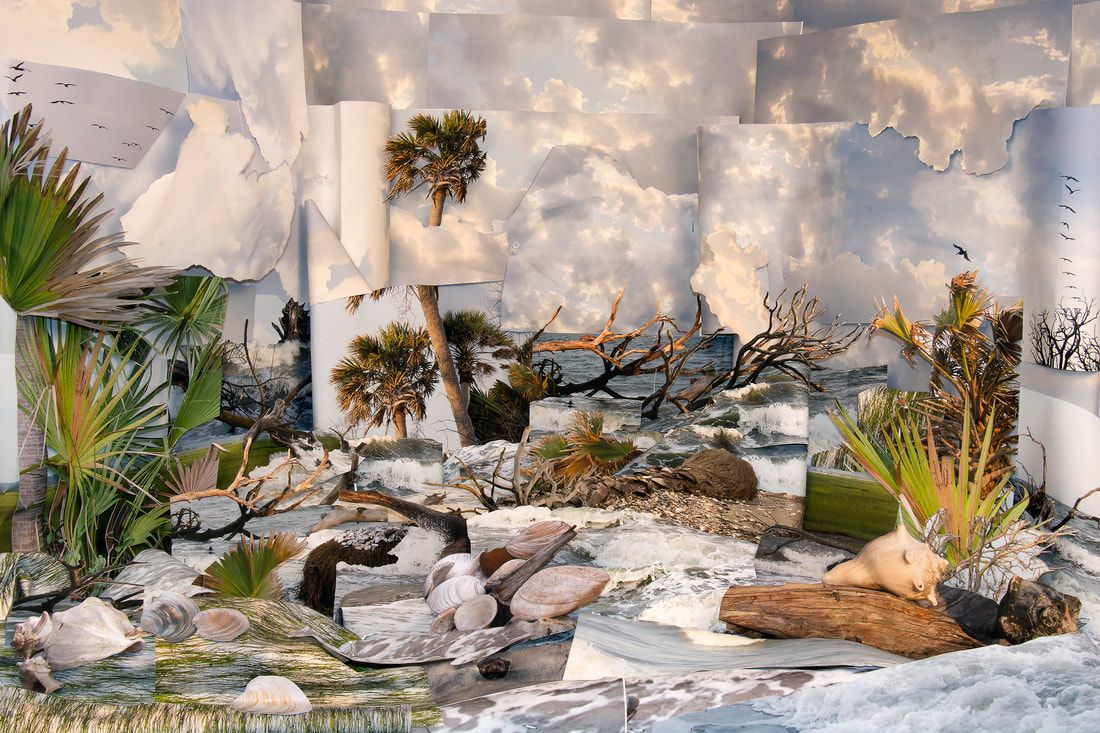
Botany Bay, South Carolina © Amanda Musick
Amanda Musick’s Land Unfolding work is highlighted as F-Stop Magazine’s featured artist in the Landscape issue of Oct/Nov 2021. Her work examines the natural environment and the ways in which a photograph can function to represent place. Musick departs from historically traditional representation of landforms and scenes; both real or imagined. She explores this dichotomy through her use of photographs made of real landscapes to construct deceptively new vistas and forms, though, as she states, they are new views of place, and they are not imaginary.
Musick creates her landscape collages through a process of deconstruction and reconstruction. Floating landscape forms are made from the deconstructed remains of the collages. These newly created spaces could be seen as portraying a sense of loss, void, and definitely a skewed reality. Her processes speak to the nature of our continually changing landscapes as well as our attempt to preserve and piece it back together. These two diametrically opposed visual and metaphoric forces create tension that plays with the viewer’s sense of visual equilibrium in a subtly tumultuous visual display.
Cary Benbow (CB): What compels you to make the images you create?
Amanda Musick (AM): Specifically to the Land Unfolding series, I was compelled to make this work starting in 2017 while on a cross country trip to visit several of our National Parks. I felt an urgency to photograph and experience these grand landscapes after the 2017 President’s administration began to reduce protection of many of the National Monuments and parks. With that threat as well as the constant reality of climate change, I wanted to make work that encouraged appreciation of these places as well as challenged the way we view and experience the landscape.
At the time I did not know the work would take this form, there was no plan other than to take a significant amount photographs of each place and figure it out later in my studio.
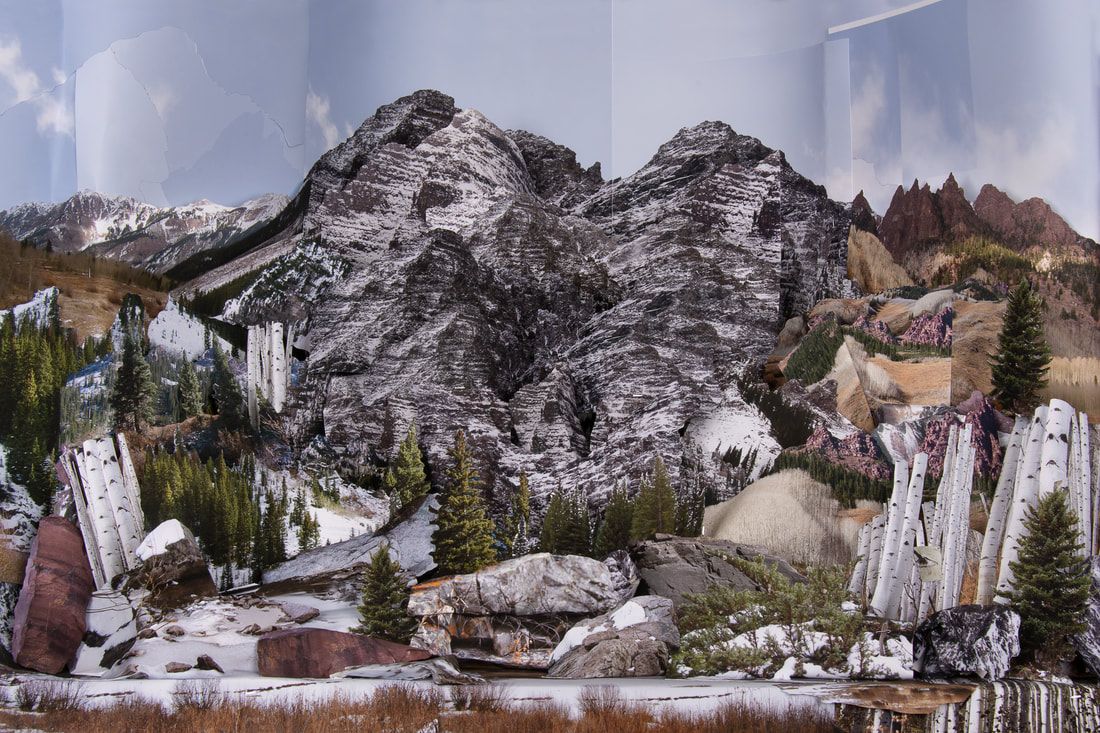
Maroon Bells, Colorado © Amanda Musick
CB: Why did you become a photographer initially?
AM: Ha! Sometimes I ask myself that, because it’s not exactly easy but I enjoy the processes and appreciate what photography provides for us. In art school, photography classes seemed to be the most difficult for me. I enjoyed that challenge and wanted to be better. In such an image based society it’s challenging to make a photograph that people haven’t already seen. That challenge has always intrigued me. Photography allows for pausing time and showing a certain perspective whether formally or subjectively. I never felt like I was very good with words and photography allows me to say “Hey, look at this, think about this.” It’s a form of communication that for me makes more sense and excites me daily.
CB: How did you get started?
AM: I guess my initial interest began as a child. Many of my family members worked for Eastman Kodak and models of Kodak cameras new and old were easily accessible at home. I used to beg my mother to take me to get our portraits made at the department store. She said I asked every Saturday. It wasn’t that I was vain, I just enjoyed watching the photographer and seeing all of the equipment.
Later on while taking photography classes in college I was encouraged by a professor to submit my work to a show juried by William Wegman. To my complete surprise, my work was accepted. It wasn’t until then that I thought photography was a serious possibility for me.
CB: One’s roots often influence artistic practices- where did you grow up and how did you spend your formative years?
AM: I grew up in East Tennessee and Southwest Virginia, in the mountains and along the river. A significant amount of my childhood was spent outdoors. I fondly remember full days spent playing on the river bank with my dog, investigating every nearby rock, leaf, bug, or anything else that we came across. A lot of my formative years were also spent with my grandparents. They encouraged me to create, taught me their crafts of sewing and working with wood. I spent quite a bit of time with them outdoors as well. They taught me that change is inevitable, but taking the time to appreciate the butterflies, the clouds, and those quiet details in our surroundings make testing times a bit easier to navigate.
CB: Can you please explain the idea behind your Land Unfolding images in this issue? How do they relate to your other projects, or how are they significantly different?
AM: I set out to photograph in National Parks with the understanding that these places have been documented by famous photographers and park visitors hundreds of times. All along the way I wondered what the purpose was for me also photographing these places, and how was I going to make some other way of seeing these familiar vistas. The idea came to me while in Big Bend National Park. I visited Big Bend on a whim and had little preconceived ideas or knowledge of what this place looked like. The way the light touched the mountains, the patterns of the flora growing in the river basin of the Rio Grande, and each rock seemed unreal at first because of its complete unfamiliarity. I had not experienced place in this way since I was a child. This experience caused me to consider how we view and perceive the landscape and how the fragments we see define our view of the hole. This translated through materials into my first Land Unfolding pieces.
Visually, Land Unfolding is very different from other projects. However, all of my projects are of a constructed nature. Throughout my practice I often make things to be photographed, or set up people or objects to be photographed. Land Unfolding however explores the use of photography as medium more than any other project. From taking photographs in the landscape, to printing the images, to then building something new using those prints, and then rephotographing photographs I really got to explore formal elements in photography on many levels- perspective, light, space, and so on..
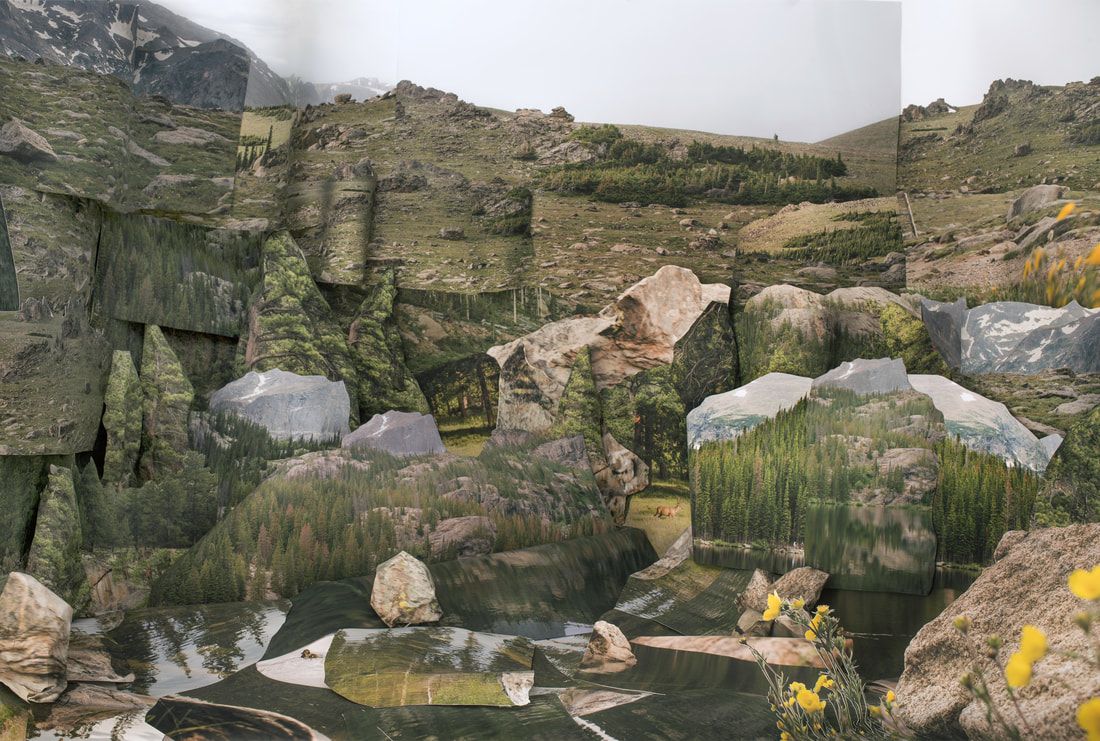
Rocky Mountain National Park, Colorado 2018 © Amanda Musick
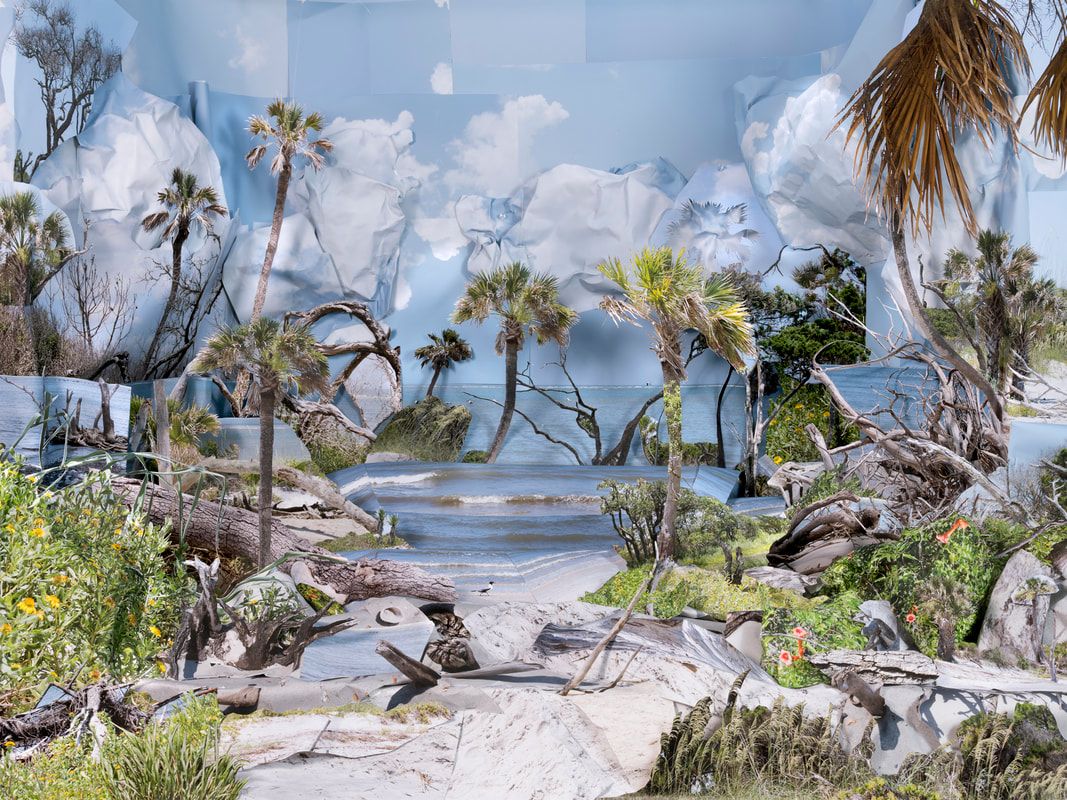
Folly Beach, South Carolina 2018 © Amanda Musick
CB: Who are some of your photography inspirations or mentors?
AM: These days all the photographers I follow and read about inspire me in some way or another to keep working. It’s not always easy to navigate life and keep making. Seeing other photographers making any kind of work is a great inspiration and I applaud them for just doing the work.
But more specifically, the most significant photography inspiration that changed the way I thought about photography was seeing the collaborative work of Barbara Cuirej and Lindsay Lochman. Their work was shown in one of my first photography classes. It wasn’t until seeing their work did I fully realize that I could make things to be photographed. It was an exciting moment and brought me into the constructed image mode of photography. Now, Barbara and Lindsay are my friends and along with their brilliant projects, their encouragement and advice has been very significant to me.
Of course I want to mention the professors I had through school, Joshua Dudley Greer, Mike Smith, and Anderson Wrangle. Their work, photography practices and everything they taught me is continually an inspiration.
CB: Do you feel there is a significant difference between “documentary” style photography versus “landscape” photography as a label? Or do you feel it’s important to define those genres?
AM: I think that depends on how the landscape is being photographed. However, genres and labels are not incredibly significant to me. As an artist I’m not really thinking about labeling my work. Don’t get me wrong, I do consider how my work fits in to the contemporary world and the context in which it functions. I feel like labels and genres are more so for the viewer.
CB: Do you feel your work falls into either of those categories? Or do you feel comfortable categorizing your work in that way?
AM: Obviously my work is about the landscape, but I don’t really consider it landscape photography or documentary photography. I consider landscape and documentary photography to be a single image. My work began that way, but since many photographs are incorporated into the final image, I think it is closer to collage than anything else. If others consider my work landscape or documentary photography, that’s perfectly fine as well.
Lately I describe my work by quickly explaining the process. I tell people that I go into a landscape and take many photographs, then I print them out, build a diorama using the photographic prints, and then photograph the completed diorama. The process is important to me, and I at least see people’s heads nodding when I describe the process. That seems to be helpful to people in understanding the work.
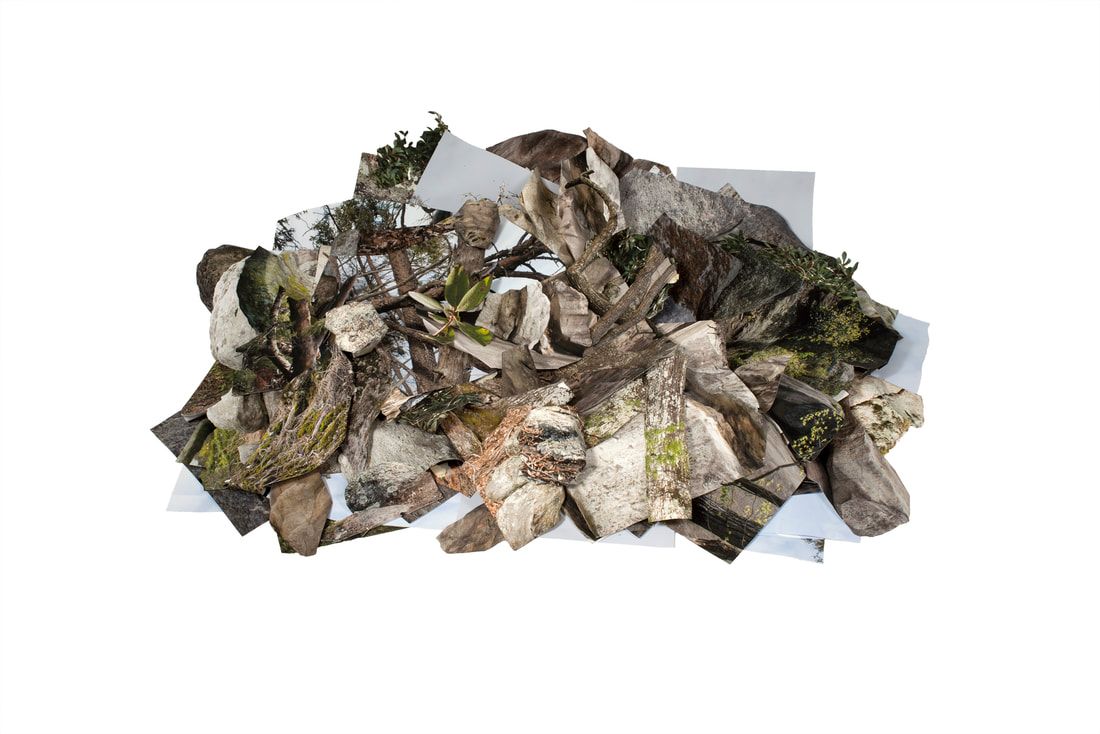
Big Rock Mountain II, Nine Times, South Carolina 2018 © Amanda Musick
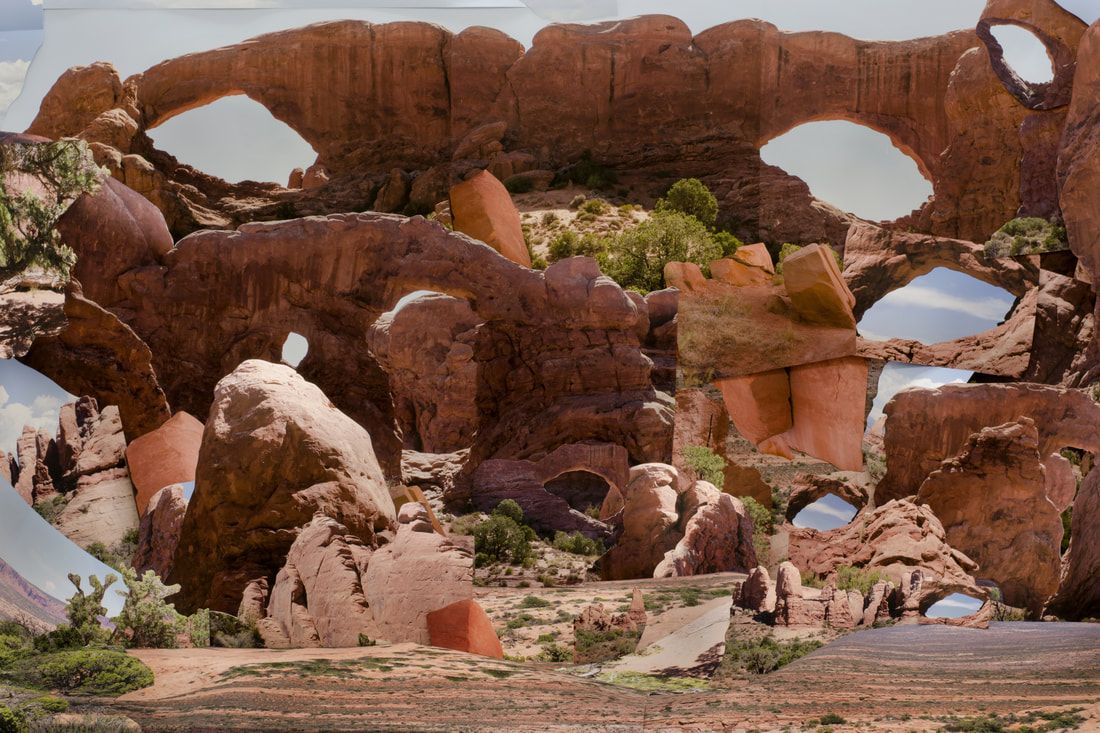
Arches National Park, Utah 2017 © Amanda Musick
CB: Do you see your work as documenting your experience or environments, or commenting on them, and what is your intent for the viewer?
AM: Both. In the series I show the iconic views that most people would pull their phone out and take a picture. The iconic views that Ansel Adams, Carleton Watkins, Edward Weston, and many others photographed. We’ve all seen those signs and markers at parks that plant you in the perfect viewing spot or photo opportunity. I like to stand there and make a photograph as well. They’re not wrong, and I like to include the collective experience of place. I’m very interested in how others experience the landscape, if any of us go to the same location and photograph it we’d see very similar photographs but also very different details. We all notice different things and different fragments interesting. In a way the work is a commentary on how individuals view, perceive, and treat these landscapes.
The work is also very much about my personal experience in each place. My own sensory experience of moving through that landscape at that specific time and day and the artist’s perspective of doing so. I’m showing people what was of interest to me that moment and in that atmosphere.
Overall, I suppose I want the viewer to take a critical look at the landscape. It takes a moment to process the compositions, it is familiar yet unfamiliar. It is like a puzzle in a way. I would like to think that a viewer would consider their role in how we manipulate and appreciate the land.
CB: What are you currently working on? Any new projects?
AM: I currently have many unfinished projects and have been spending time organizing those and deciding where to go from each unfinished project. Along with finishing up incomplete projects and processing film, I have been working with video. Specifically I’ve been wearing a green suit and moving natural objects around, and editing myself out of the video. It’s been a fun experiment. New work will arise soon.
Amanda Musick’s photography has been widely exhibited and recently included in Ctrl+P Project at Catherine Edelman Gallery, Chicago, IL. She is actively involved in panel discussions, exhibitions and presentations through the Society for Photographic Education. Her work is in the Presidential Collection, East Tennessee State University, Johnson City, TN, and she is a 2021 Critical Mass Top 50 photographer.
To see more of her work, visit her website: http://www.amanda-musick.com/
Location: Online Type: Featured Photographer, Interview, Landscapes
One response to “Interview with photographer Amanda Musick”
Leave a Reply
Events by Location
Post Categories
Tags
- Abstract
- Alternative process
- Architecture
- Artist Talk
- artistic residency
- Biennial
- Black and White
- Book Fair
- Car culture
- Charity
- Childhood
- Children
- Cities
- Collaboration
- Community
- Cyanotype
- Documentary
- Environment
- Event
- Exhibition
- Faith
- Family
- Fashion
- Festival
- Film Review
- Food
- Friendship
- FStop20th
- Gender
- Gun Culture
- Habitat
- Hom
- home
- journal
- Landscapes
- Lecture
- Love
- Masculinity
- Mental Health
- Migration
- Museums
- Music
- Nature
- Night
- nuclear
- p
- photographic residency
- Photomontage
- Plants
- Podcast
- Portraits
- Prairies
- Religion
- River
- Still Life
- Street Photography
- Tourism
- UFO
- Water
- Zine

GREAT INTERVIEW VERY PROUD DAD